RVing in Mammoth Cave National Park is truly unique, as the park’s marquee feature is unlike anything else in the national park system. As its name implies, the park’s focal point is the world’s longest known cave system that’s more than 400 miles long.
Even at that length, there are new sections still being discovered. According to Molly Schroer, the park’s Public Information Officer, another six miles were recently added, and “there’s no end in sight.”
For that reason, it might not offer the same instant drama as other national parks. You don’t drive up and immediately see a memorable mountain range, historic fort, or one of the biggest canyons in the world. You must work just a little harder to immerse yourself into the beauty of this park – but it is worth every bit of the effort.
Why Visit Mammoth Cave National Park in an RV?
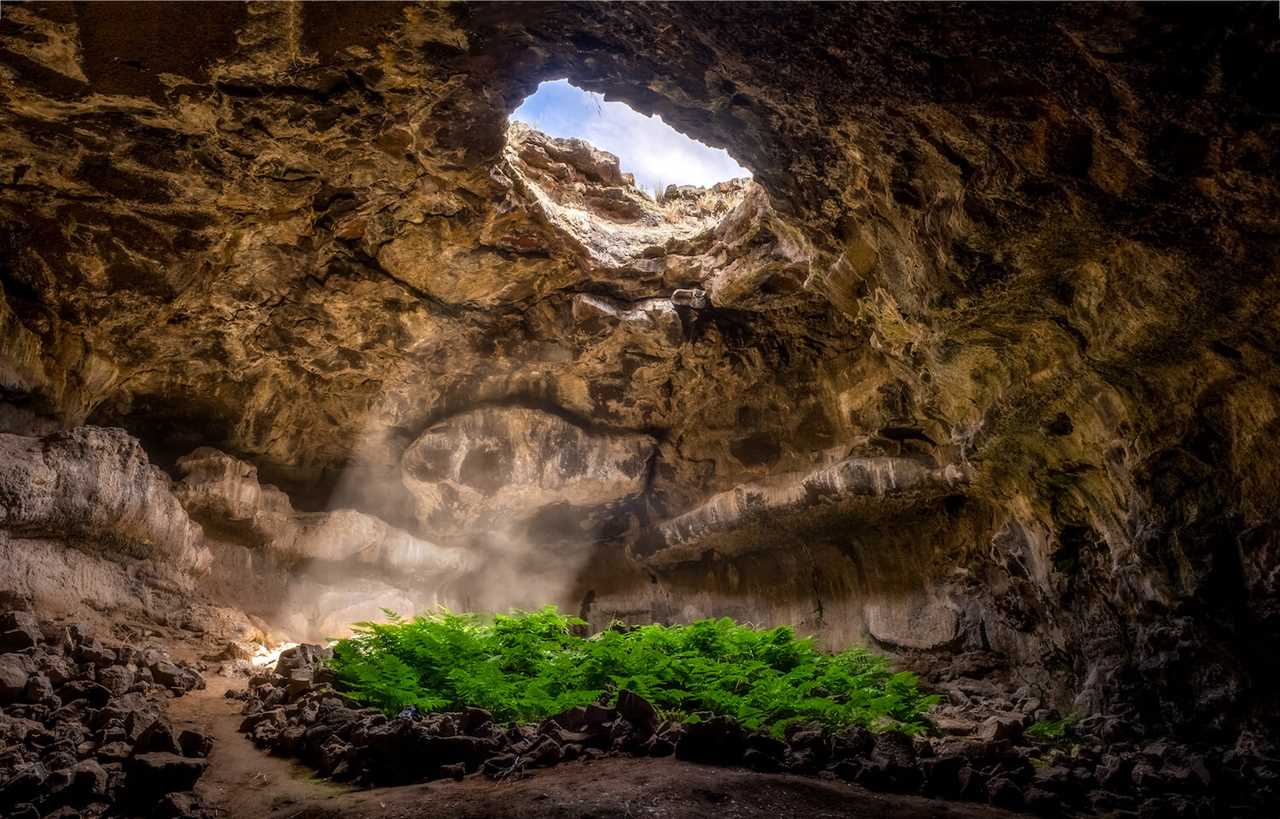
Photo by Ko Zatu via Shutterstock
Whether you’re exploring the cave itself or engaging in some other adventure, it’s great to have an RV as a base camp in this park. Two campgrounds in the park allow RVs and private campgrounds for RVs in the nearby gateway (and aptly named) communities of Park City and Cave City.
The incredible cave that is the park’s namesake (and a UNESCO World Heritage Site) is full of intriguing chambers, tunnels, stalactites/mites, and domes. It runs under four Kentucky counties, extending well beyond the park’s boundaries.
In addition to underground exploration, the park’s nearly 53,000 acres consists of lush rolling hills, deep river valleys, and rich diversity of flora and fauna (it’s also been designated an International Biosphere Reserve). In addition to the 20 different cave tours offered over a year, there’s a hiking, rock climbing, canoeing, kayaking, and horseback riding.
The Green River bisects the park, separating it into a north and a south side. The south side is more developed and includes the visitor center area, while the north side offers more of a backcountry experience.
When to Visit Mammoth Cave National Park
You can visit Mammoth Cave National Park any time of the year. The only day they don’t run cave tours is on Christmas Day. Visitation peaks during the summer months and is lowest during the winter months – although the cave makes a truly great year-round destination.
This is because it’s always 54 degrees, whether it’s 90 and humid or snowing above ground. Be aware that the slower winter months offer fewer tours and departure times, and the visitor center has shorter operating hours.
Mammoth Cave National Park in the Spring
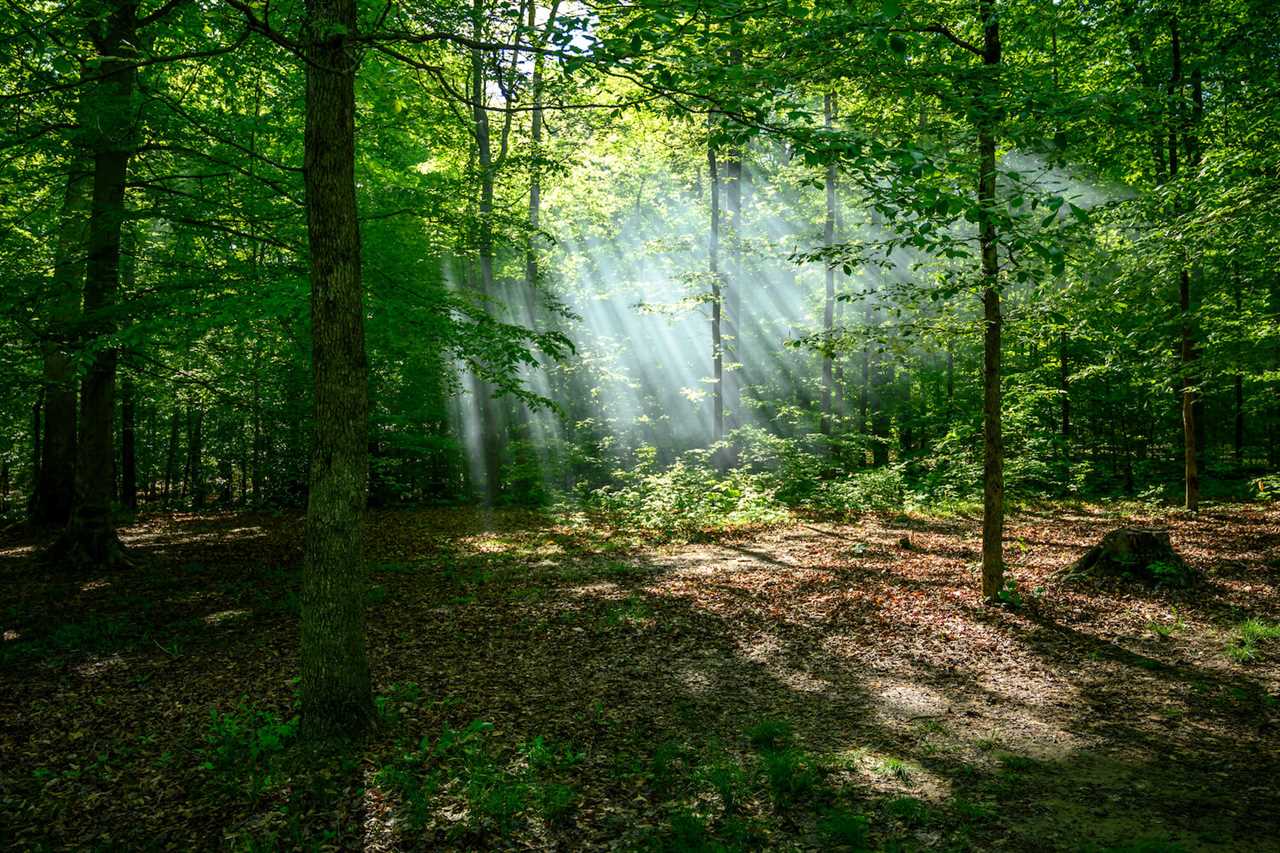
Photo by Kelly vanDellen via Shutterstock
As the park shakes off winter’s cold, spring brings newborn deer fawns as well as harbinger-of-spring, dwarf crested iris, and celandine poppy wildflowers. Daytime temperatures warm to the mid-60s or 70s and seldomly drop below freezing at night. Precipitation averages between four to six inches.
More tour options and more frequent departure times for the cave tours are provided, although certain tours, such as the River Styx Tour, may not be offered due to higher water levels. Crowds can vary depending on such factors as spring break and holidays, so tickets may sell out early for some dates.
Mammoth Cave National Park in the Summer
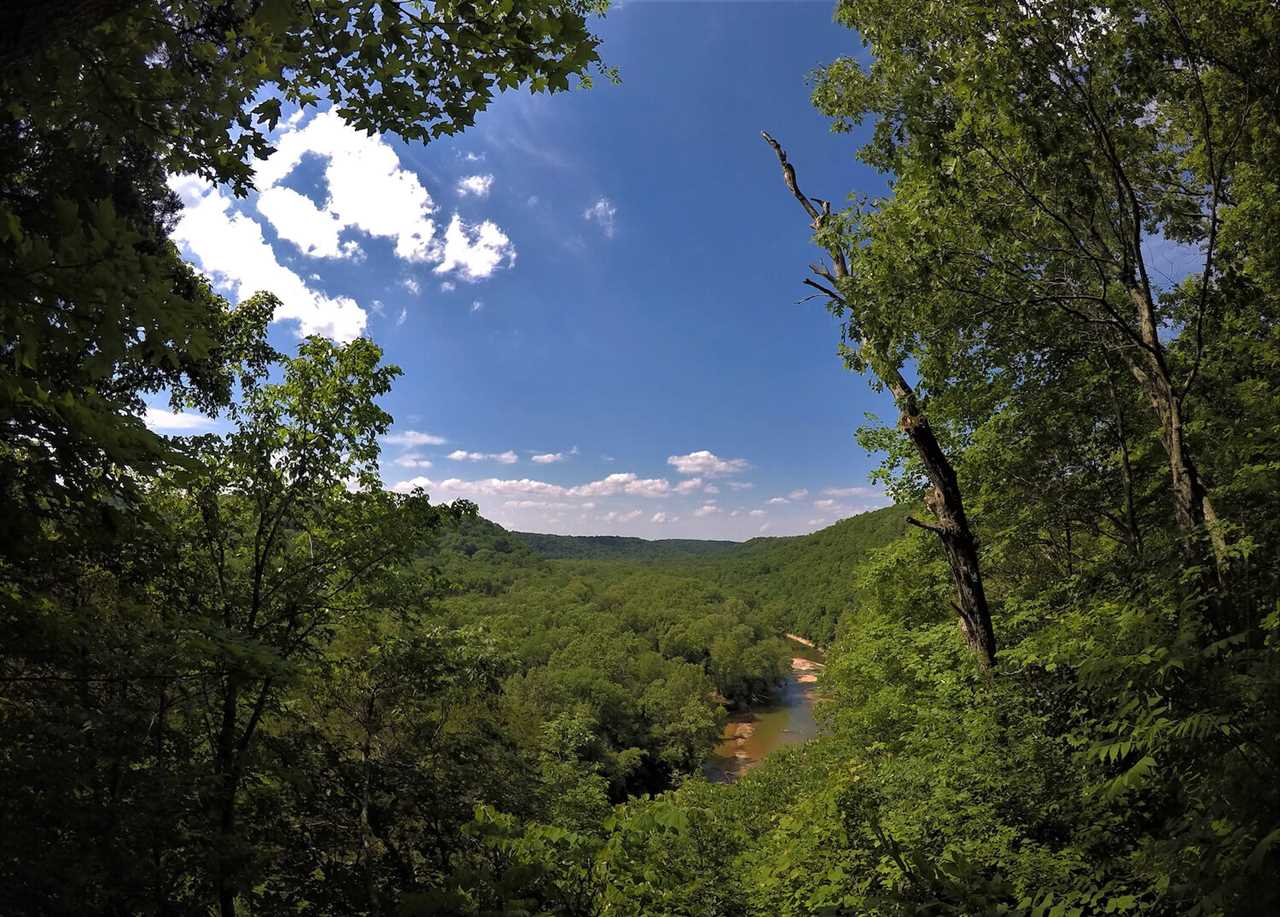
Photo by dfletch000 via Shutterstock
With summer being the park’s peak season, it is alive with activity – both human and natural. There are paddlers on the rivers, a continuous stream of people entering and exiting the cave, animals foraging the forest for food, and blooming yellow prairie coneflowers, pink blazing stars, and purple passionflowers dotting the woodland trails.
Summer brings more cave tour routes and departure times, but advanced reservations are very strongly encouraged.
Surface daytime temperatures can top 90 degrees with high humidity, making the 54 degrees of the cave feel very pleasant. But while you might enjoy shorts and tee-shirts above ground, be prepared with a light jacket when you enter the cave. Afternoon thunderstorms on the surface are also common.
Summer is also tick season in the park. To reduce the chances of tick bites, wear light-colored clothing, long pants, and long sleeve shirts, tuck pants into socks or wear gaiters, and do frequent tick checks, particularly after outdoor activities.
Mammoth Cave National Park in the Fall
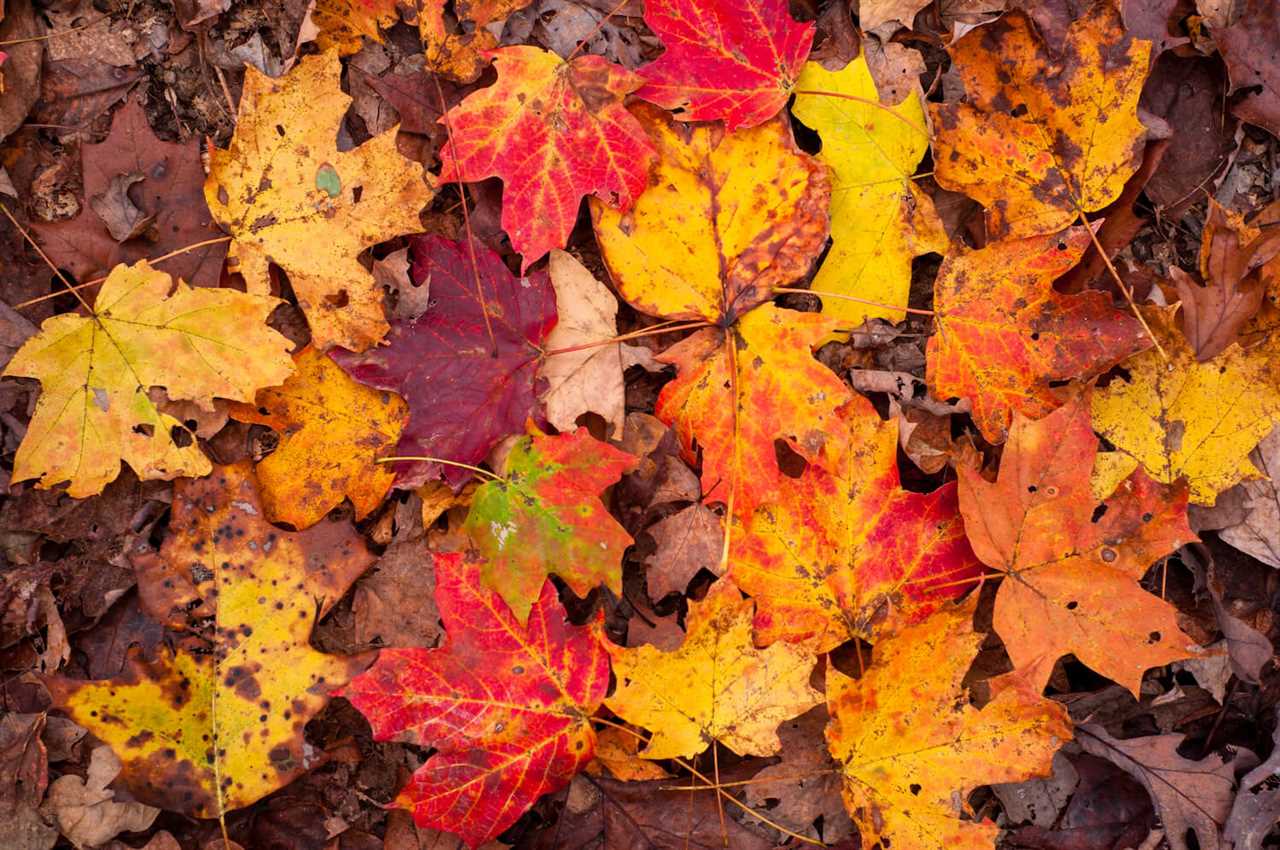
Photo by Michele Korfhage via Shutterstock
As the temperatures drop on the surface and the leaves begin to turn, the popularity of cave tours remains high, although fewer and less frequent cave tours are offered. Tickets for tours on holidays and school breaks will often sell out.
On the surface, the forest canopy fades into brilliant reds, golds, and oranges. As the leaves fall, visibility through the forest increases, revealing rolling hills and stark cliff faces.
During early fall, daytime highs average in the 70s, with lows in the 50s. As the season lengthens, the lows can drop close to freezing, but it’s also the driest of the seasons in the park.
The foliage season really gets going in late October. A hike to Sunset Point on the Heritage Trail provides a view of the color-splashed hillsides. Or you can drive to some of the historic churches in the park as their white exteriors provide a great contrast to the riot of fall colors. The four historic cemeteries are fascinating and provide a great gothic or even spooky autumn feel.
Mammoth Cave National Park in the Winter
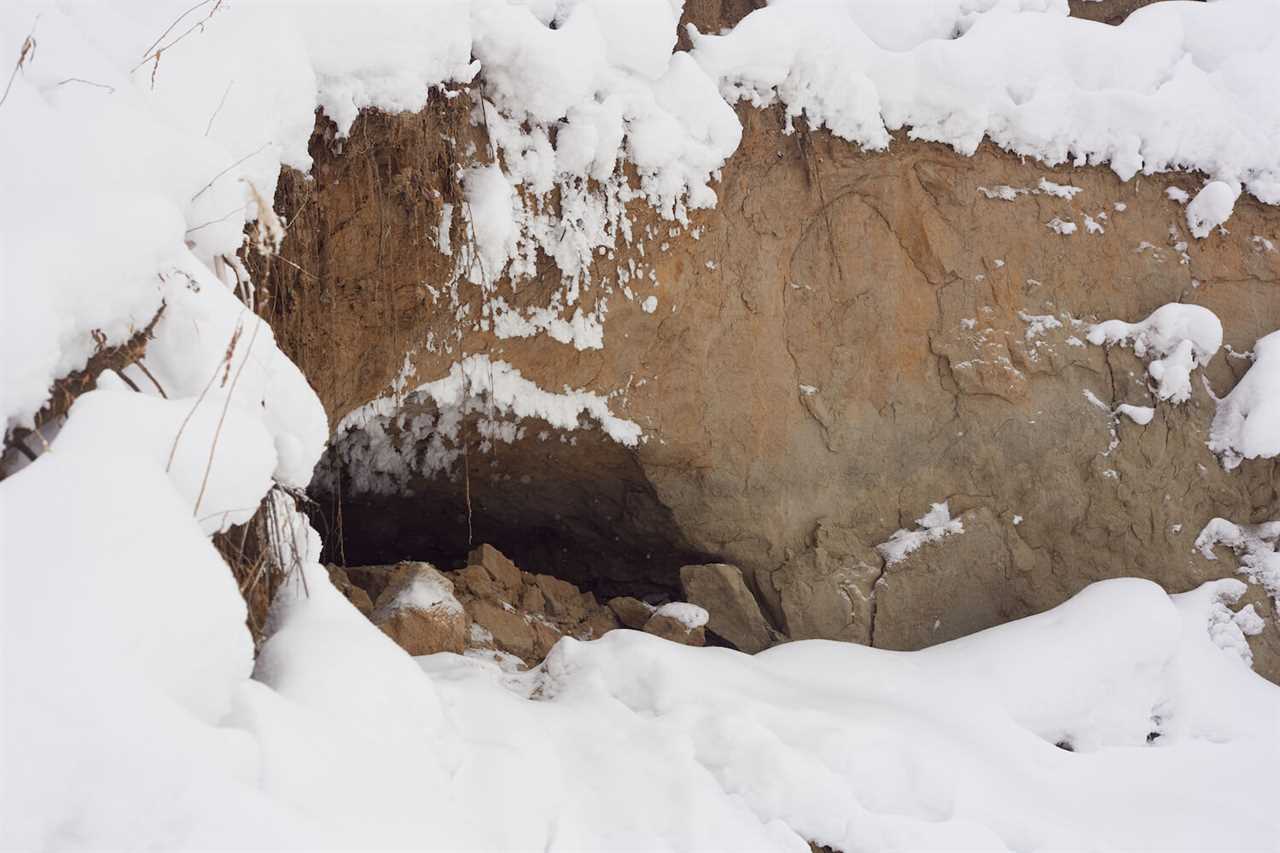
Photo by Nikolay Shargin via Shutterstock
Colder surface temperatures, fewer crowds, and perhaps a dusting of snow or icicles decorating the cave entrance bring a hush to the park and make it a great time to find some real solitude.
While tour options and departure times are reduced in the winter, tickets are generally available days in advance (save for major holidays). In winter, daytime highs rarely top 50 degrees while nighttime lows often drop below freezing. Snow and ice storms are possible, with severe winter storms possibly causing temporary delays to park operations.
Where to Stay

Mammoth Cave Campground Photo by NPS
There are plenty of places to camp in the park, but two campgrounds stand out for RVers. Mammoth Cave Campground accommodates RVs up to 38 feet long and trailers up to 26 feet, but there are no water or electric hookups (except at two VIP sites). A dump station is located at the adjacent service center, and sites 37 and 38 are ADA accessible.
The campground is five minutes from the visitor center and offers various amenities on a seasonal basis, including a camp store, laundry, potable water, flush toilets, and coin-operated hot showers at the Caver’s Camp Store. Deer and wild turkeys often stroll through the campground to graze in the early mornings and at dusk.
Maple Springs Group Campground accommodates RVs up to 40 feet and trailers up to 26 feet long. All seven group sites have electric and water hookups for RVs. There are potable water and vault toilets, but both are seasonal.
This campground caters to campers with horses, but RVers could use the sites as a group too. Note that it takes only about 30 minutes to drive to the campground from the visitor center if your RV can use the ferry versus a 50-minute drive if it cannot.
Houchin Ferry Campground is another option for tent campers, and there are backcountry campsites that are only accessible on foot, by horse, or on canoe or kayak via the river.
Staying Outside the Park
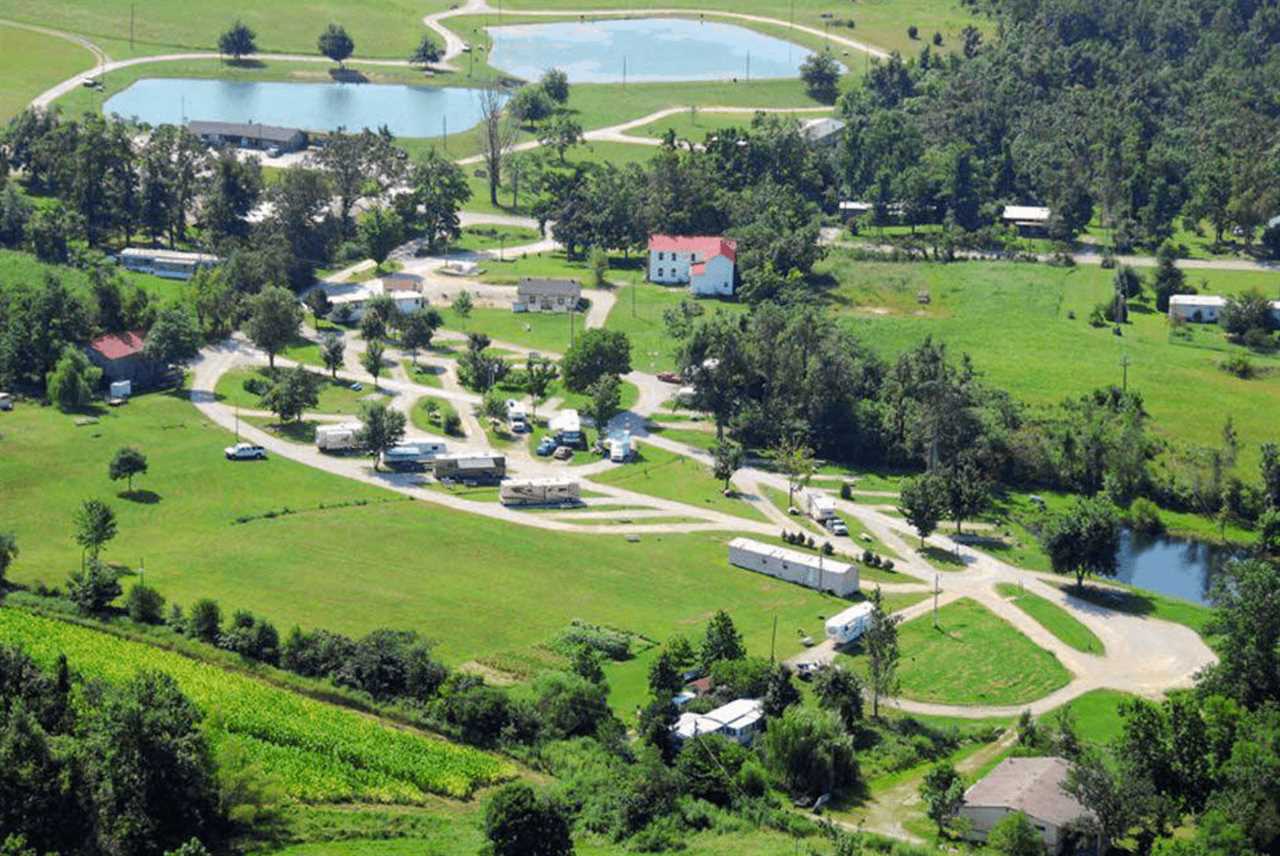
Singing Hills RV Park Photo by Good Sam
The nearby towns of Park City and Cave City offer a few options to camp outside the park, including:
- Cave Country RV Campground: Located in Cave City, KY, about 18 minutes from the visitor center.
- Diamond Caverns RV Resort & Golf Club: Located in Park City, KY, about 11 minutes from the visitor center.
- Singing Hills RV Park: Located in Cave City, KY, about 12 minutes from the visitor center.
- Mountain Top Retreat Cabins & Campground: Located in Cave City, KY, about 13 minutes from the visitor center.
Invest in a Good Sam Membership and save 10% on nightly stays at Good Sam Campgrounds.
Tips for your Camping Stay
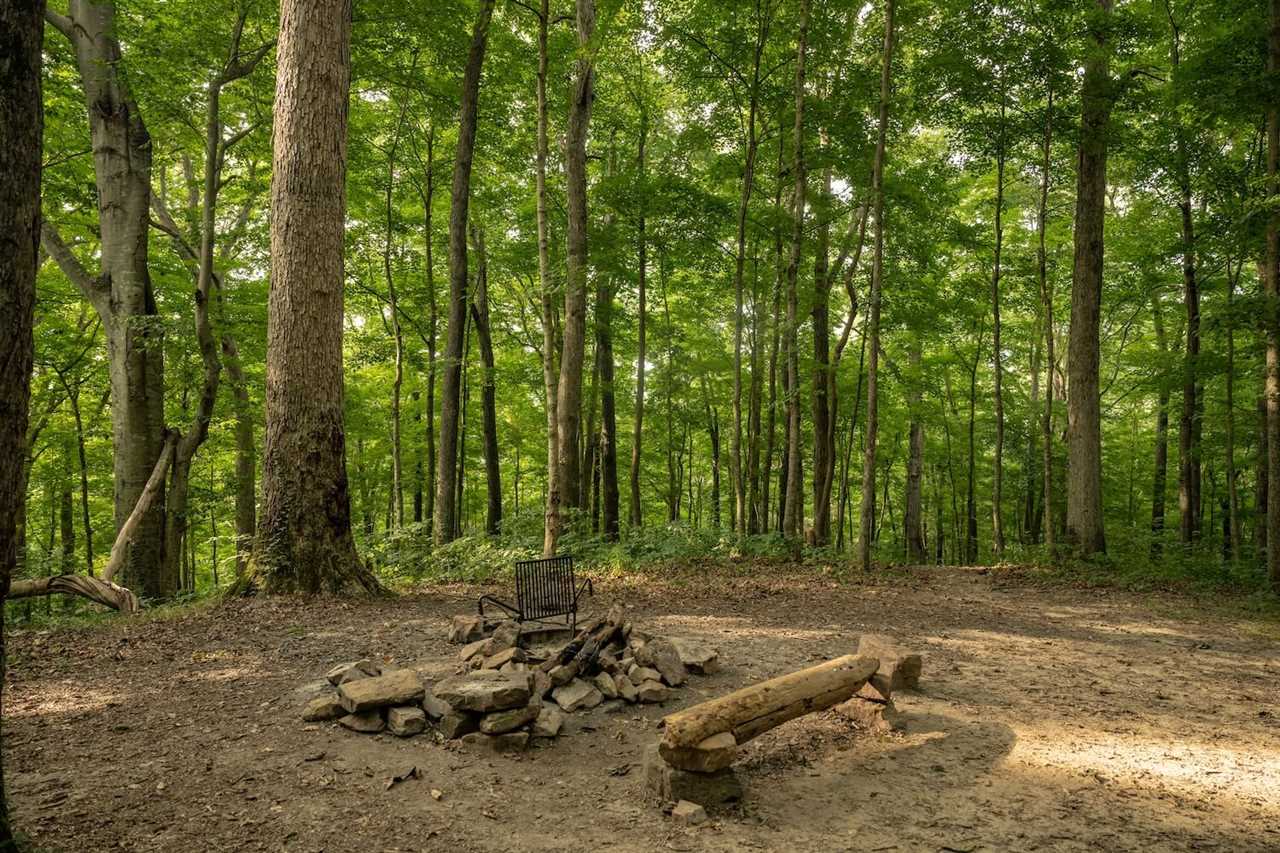
Photo by Kelly vanDellen via Shutterstock
- Camping requires a permit, but you’ll obtain one when you reserve a campsite.
- Reservations are available from March 1 to November 30 and should be made well in advance, especially for summer stays and major holidays.
- Book at Mammoth Cave Campground
- Book at Maple Springs Group Campground
- Note that there’s a two-week maximum stay at both campgrounds.
- Both campgrounds offer sites with picnic tables and fire pits.
- Transportation of firewood into the park is prohibited due to insect infestations threatening native tree species. Obtain wood in the park or bring a propane-fueled portable firepit.
- There is no internet and limited cellphone reception throughout the park. Some carriers have better service than others, but dead zones exist, making a signal booster a worthwhile investment for your visit.
- Insects, including ticks, can be prevalent in the park depending on the time of year you visit. Utilizing insect repellant and instituting regular tick checks after your hikes is highly recommended.
How to Get Around Mammoth Cave National Park
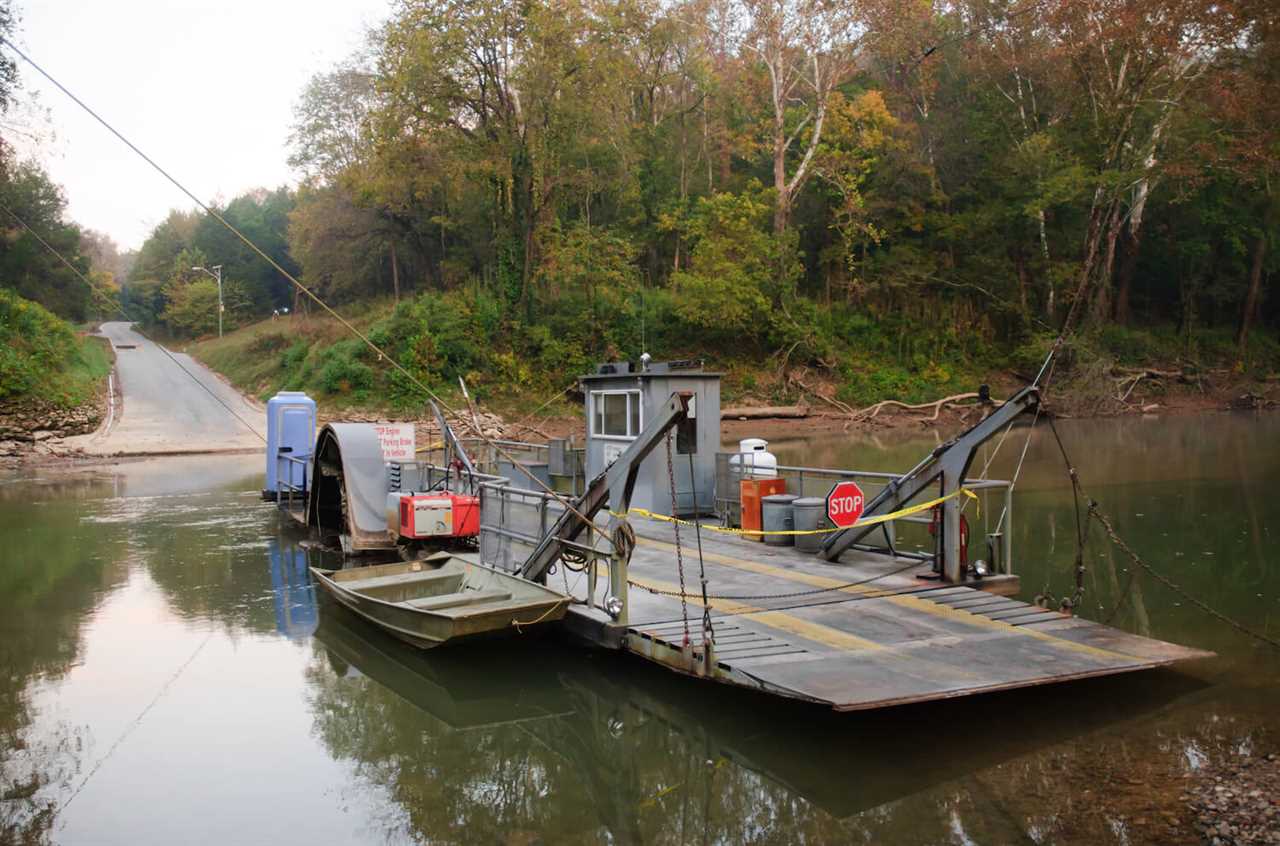
Photo by Zack Frank via Shutterstock
The nearest major highway for accessing Mammoth Cave is Interstate 65. From Bowling Green, you’ll take I-65 North, take exit 48, and follow KY-255 to the park entrance. From Louisville, you’ll use I-65 South, take exit 53, and follow KY-70 to the park entrance.
Once you’re inside the park, there are no restrictions on the size of RVs or trailers allowed on the main roads, but larger vehicles may have difficulty traveling the park’s secondary roads or utilizing the Green River Ferry.
Many secondary roads are finished with dirt and gravel surfaces, so you may not be able to navigate them unless you have an RV that’s truly built for off-roading. Biking is also a suitable way to get around the park, as some roads are actually part of the US Bicycle Route System.
Places to Go
If this is your first visit to Mammoth Cave, make sure you put these destinations on your trip itinerary.
The Visitor Center Area
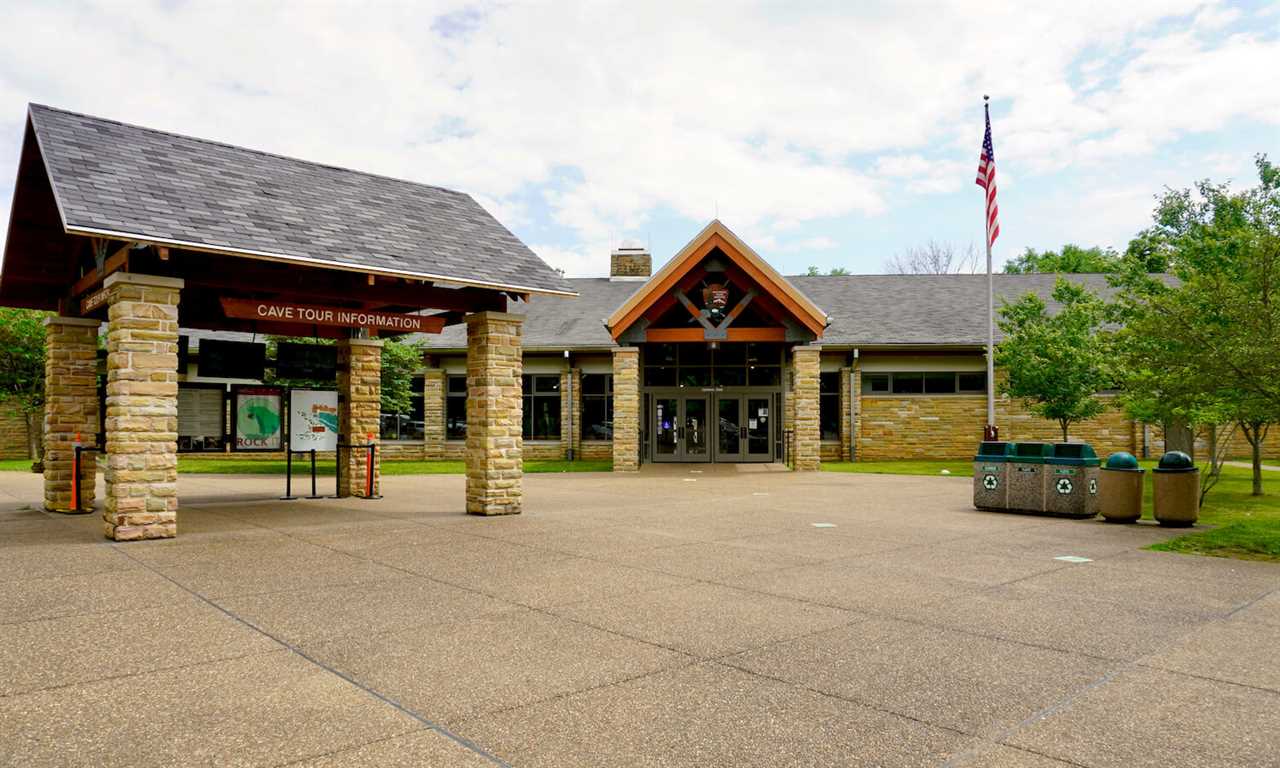
Photo by EWY Media via Shutterstock
The visitor center is the best starting point for most adventures. Just up the hill from the Historic Entrance, it’s the departure point for all cave tours. There are exhibits about the cave system, meeting points for ranger talks and hikes, and restrooms.
There’s a historic train that ran in the late 1800s, bringing tourists from Park City (then named Glasgow Junction). The Mammoth Cave Park Store is also nearby and offers up an array of gifts and keepsakes, as well as educational books, games, maps, and toys.
The Rivers
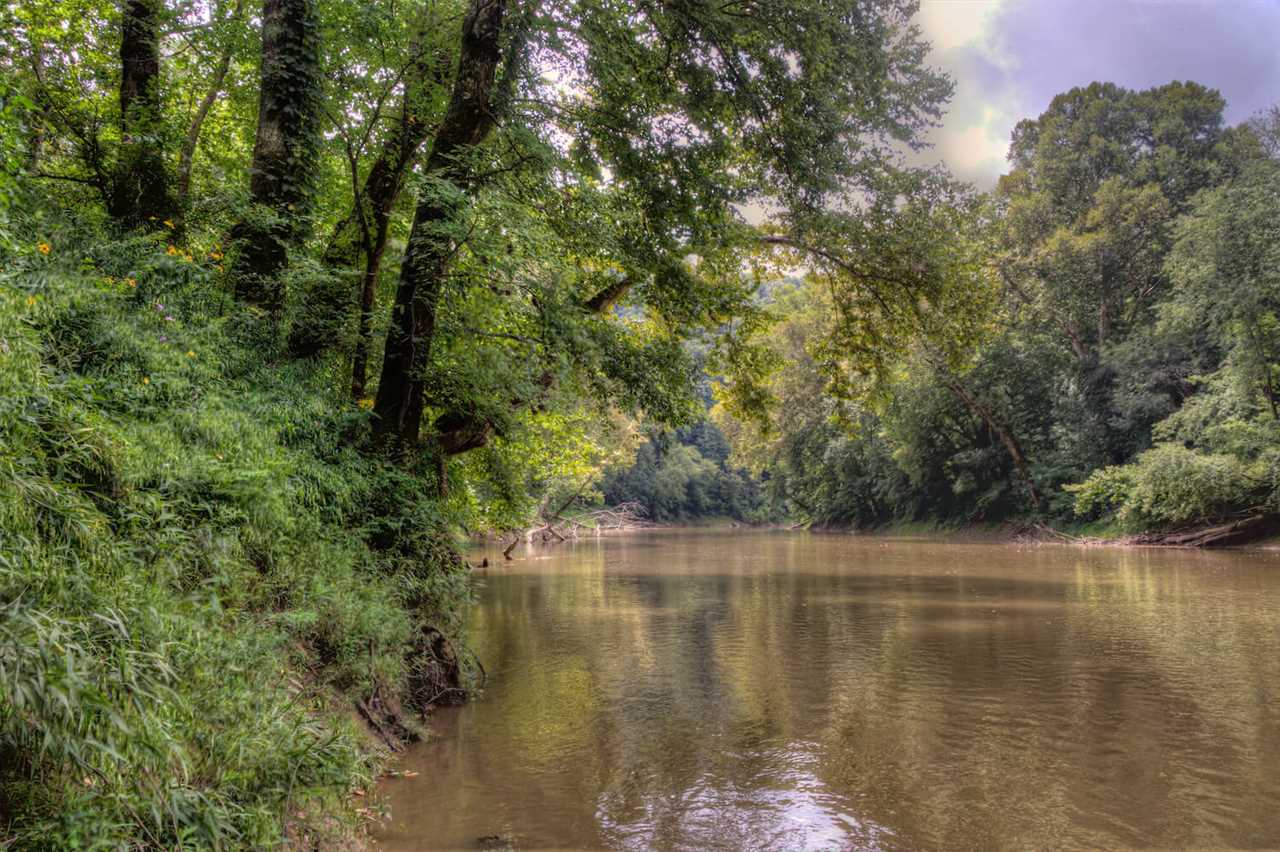
Photo by Jacob Boomsma via Shutterstock
There are more than 30 miles of rivers rushing through the park. The two rivers, the Green and the Nolin, offer opportunities to fish, canoe, kayak, and view wildlife. They are also part of the Green and Nolin Rivers Blueway, a National Water Trail.
You can rent canoes and kayaks from local outfitters and paddle past wildlife, springs, and river bluffs. You can also fish the rivers for bass, catfish, perch, and other game fish.
Historic Churches and Cemeteries
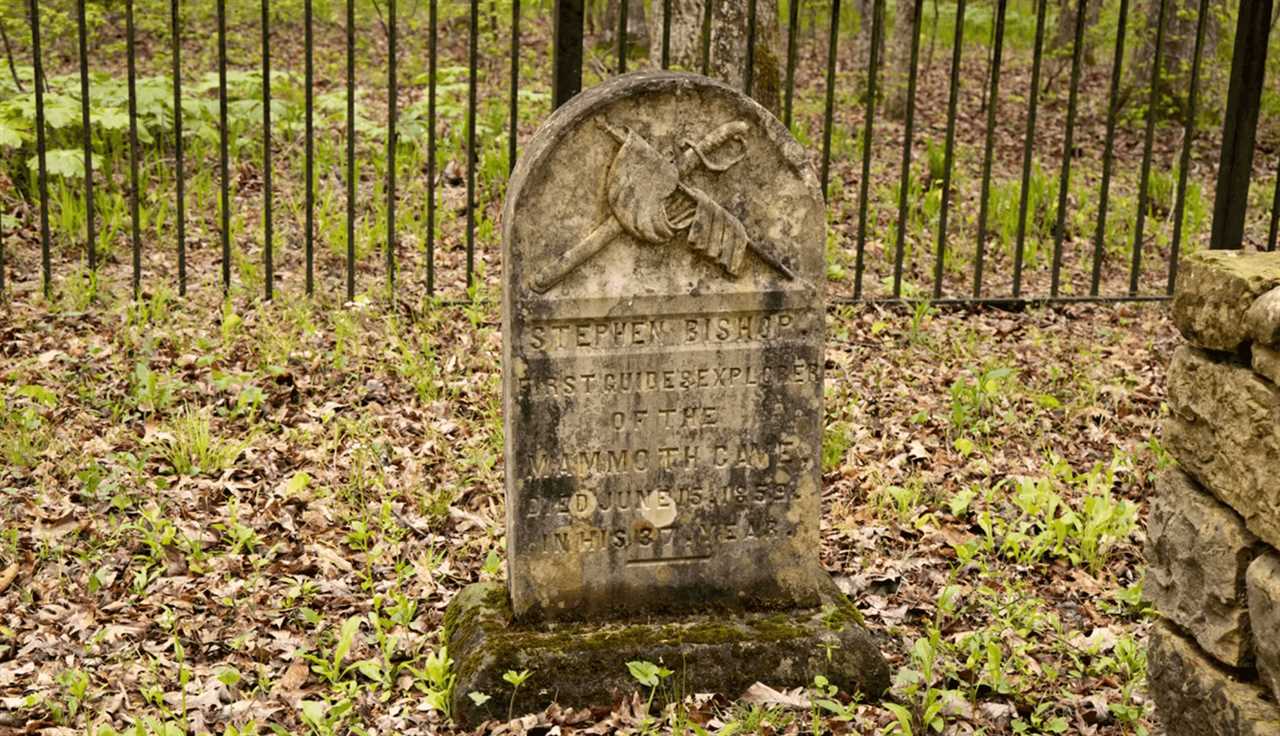
Photo by NPS
Near the visitor center, there are a few other points of interest along more than seven miles of trails. The Old Guide’s Cemetery includes a famous Black cave guide from the 19th century, among others, and is located off the accessible Heritage Trail.
Before the area became a national park, it was home to more than 600 families across 30 separate rural communities. Many stories and memories about these families and communities are alive in the park’s collection of historic churches and cemeteries.
Things To Do in Mammoth Cave National Park
Dismissing Mammoth Cave as ‘just a cave’ is as egregious as saying the Grand Canyon is ‘just a canyon.’ The mind-boggling size of this natural wonder means that it is chock full of wild and fantastic natural formations – and some unnatural ones as well.
Cave Tours
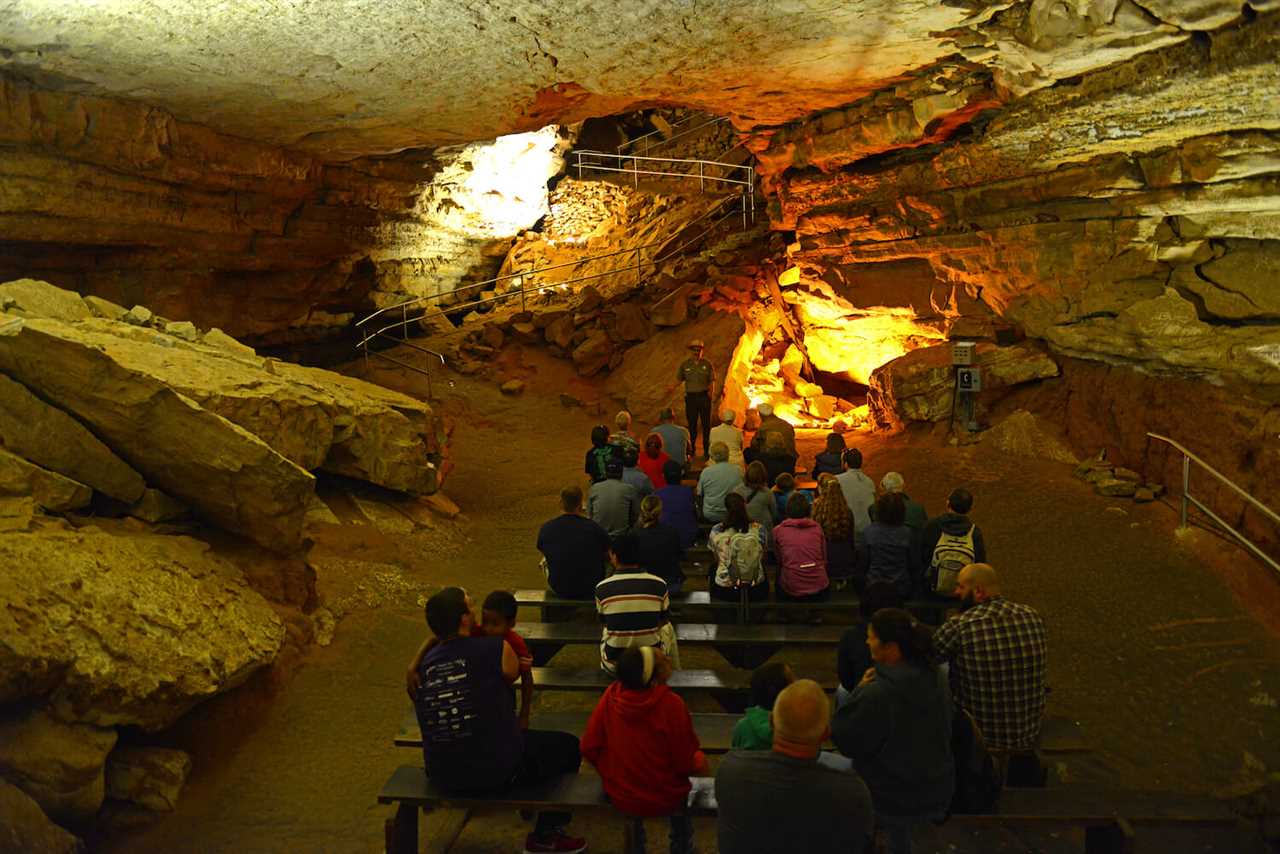
Photo by Wangkun Jia via Shutterstock
There are some 20 guided tours offered over the course of the year, but some are seasonal. Tours take from 45 minutes to up to five hours, with the most popular ones generally coming in at one and a half to two hours.
To get into any cave via the Historic Entrance or the Frozen Niagara entrance, you must have a ticket. Reservations are strongly recommended and can sometimes sell out weeks in advance. There are short and long walking tours, lantern tours, more strenuous crawling tours, and a fully wheelchair-accessible tour.
Many tours feature some of the estimated 10,000 signatures (as well as other graffiti) that were scratched into the walls, handwritten in ink, or smoked onto the ceilings by candle flame during the 1800s, all still well-preserved 200 feet below the surface.
Certain items are prohibited on the tours, including flash photography (non-flash photography is fine), strollers, tripods or monopods, walking/hiking sticks, child backpack carriers (front carriers are okay), metal framed backpacks, backpacks that extend above the shoulder or below the hips, firearms, and pets.
Hiking
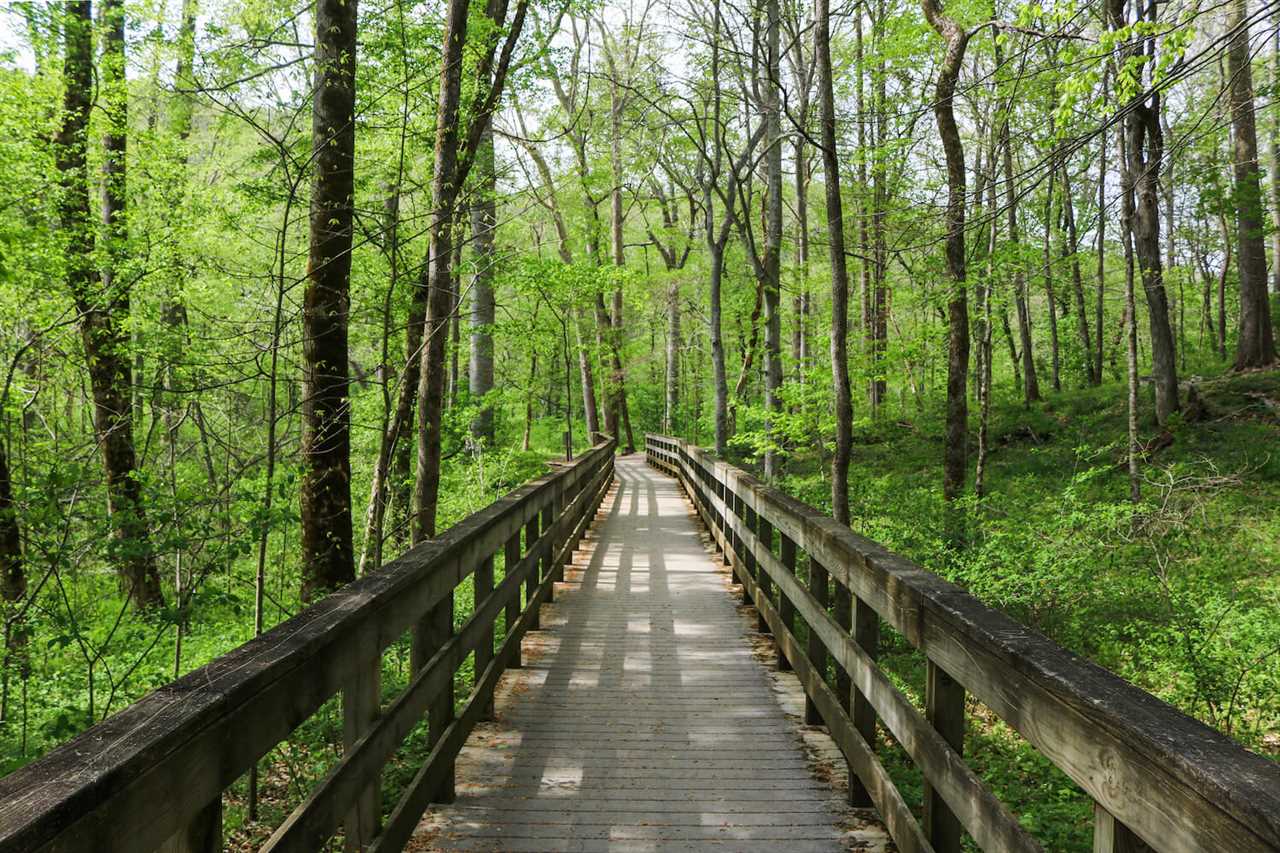
Photo by Bram Reusen via Shutterstock
Need to spend some time back in the sun for a while? There’s a self-guided Beneath Your Feet surface tour that traces the path of some of the cave tours and various ranger-led, above-ground programs, such as nature walks, birding, or wildflower hikes.
South Side Trails
There are almost 11 miles of forested trails that lie along the main park roads, including the Sand Cave Trail and Turnhole Bend Nature Trail. Take a ridgetop walk along Sunset Point, which overlooks the Green River, or enjoy the wildflowers along Cedar Sink Trail.
North Side Trails
The north side of the park is more remote and boasts roughly 37 square miles of scenic river overlooks, forested ridges, and craggy valleys. You can use more than 60 miles of backcountry trails to explore this part of the park.
Gather park maps while you’re at the visitor center or the campground kiosk. Be sure to prepare for safe hiking, research seasonal weather variations, and expect the possibility of ticks in the warmer months.
Boating, Canoeing, and Kayaking
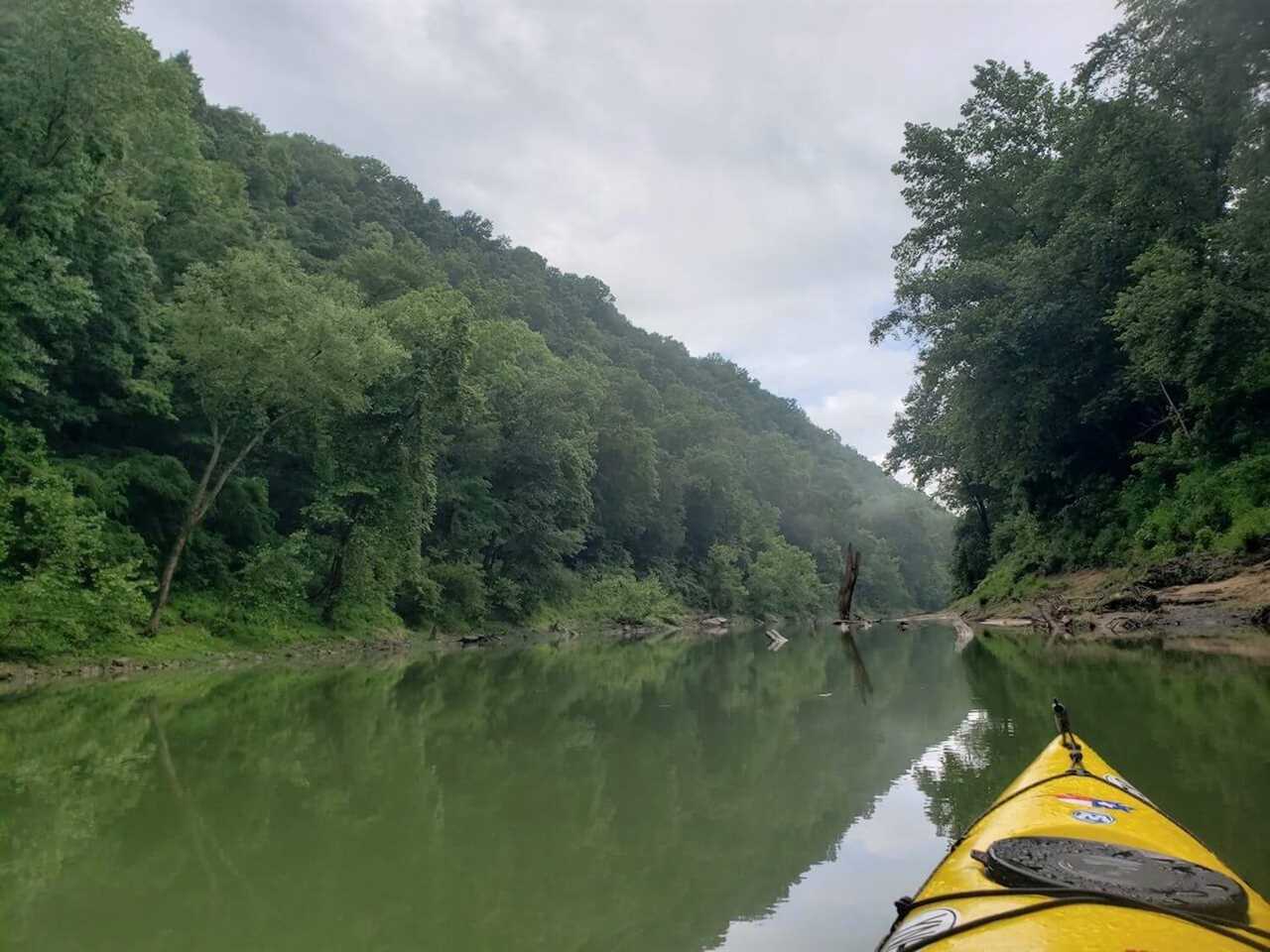
Photo by Tucker Ballister
Getting on one of the park’s rivers is a great way to escape the more crowded park sections. Green River Ferry is the main access point for motorized boats to explore the Green River and Tailwater Recreation Area is the best place for boats to launch to explore the Nolin River.
Kayaks and canoes can launch from those locations as well, but there are also launch areas at Dennison Ferry and Houchin Ferry. Be sure to consult the park service’s website for information to help you plan your river trip.
Biking
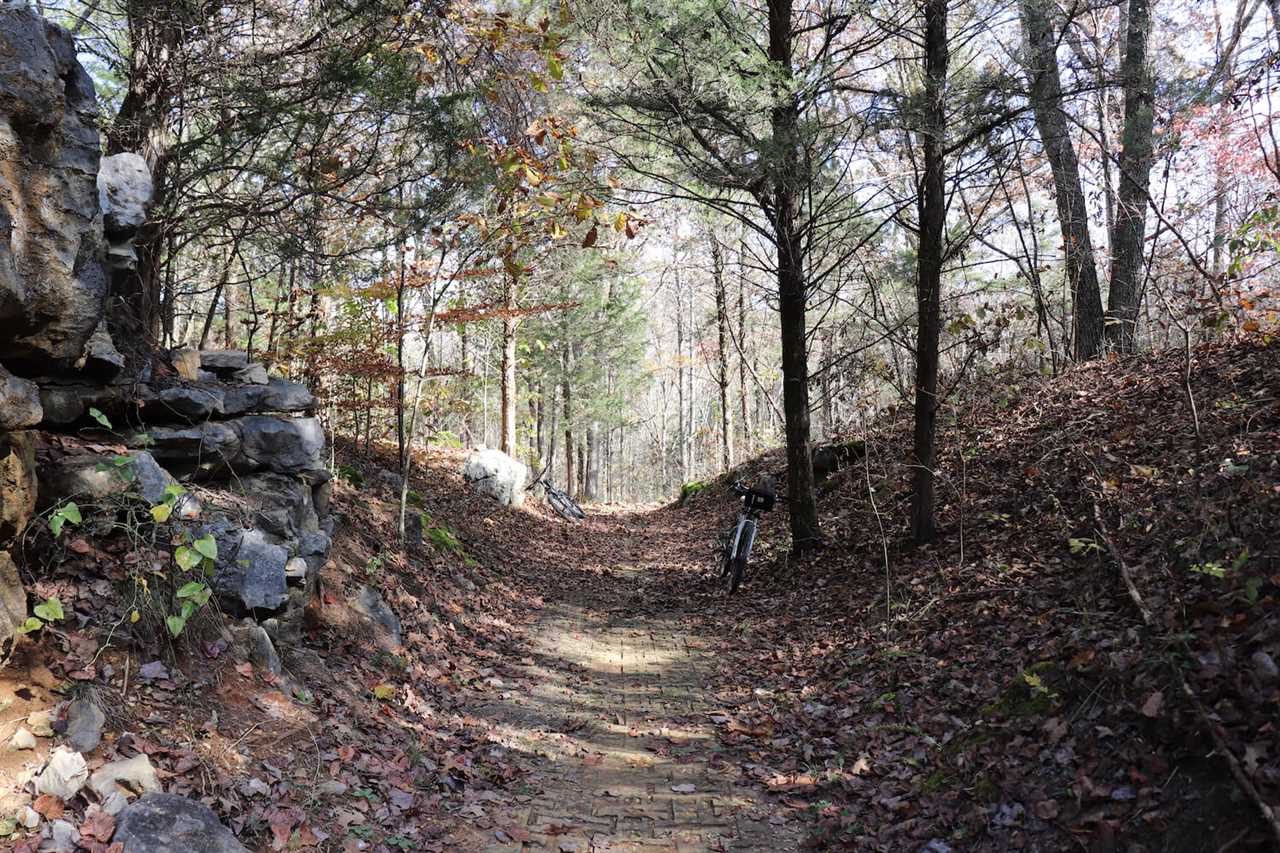
Photo by HMHahn via Shutterstock
You can bike the 9-mile Mammoth Cave Railroad Hike and Bike Trail, which was once the railbed for the tourist train from Park City. Access the trail from Park City, several points along Mammoth Cave Parkway, or the visitor’s center area. You can also rent e-bikes just outside the park.
For a challenge, the Big Hollow Loop Trails and Connector Trail combine to offer more than 10 miles of single-track mountain bike action. You can access it from the trailhead in Maple Springs Campground and then enjoy the flow as it winds through dense woods and rocky outcroppings.
Horseback Riding
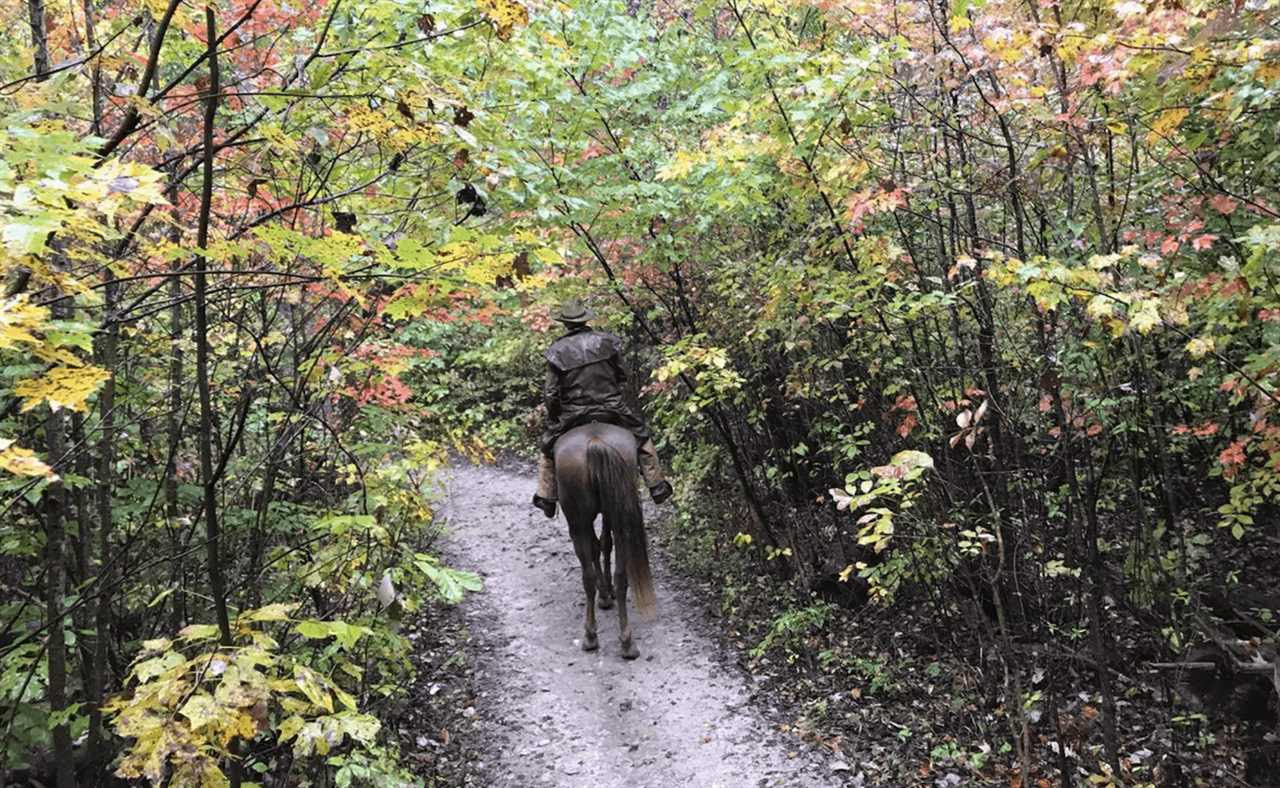
Photo by NPS
Central Kentucky is horse country, and 60 miles of backcountry trails on the north side of the park are open to equine travel. There are a variety of trails for various skills and ages, ranging from wide, smooth dirt paths where two horses can ride aside to daring, single-file trails that run along a ridgeline. There is a guided horseback outfitter, or you can bring your own horse.
What to Bring and How to Prepare
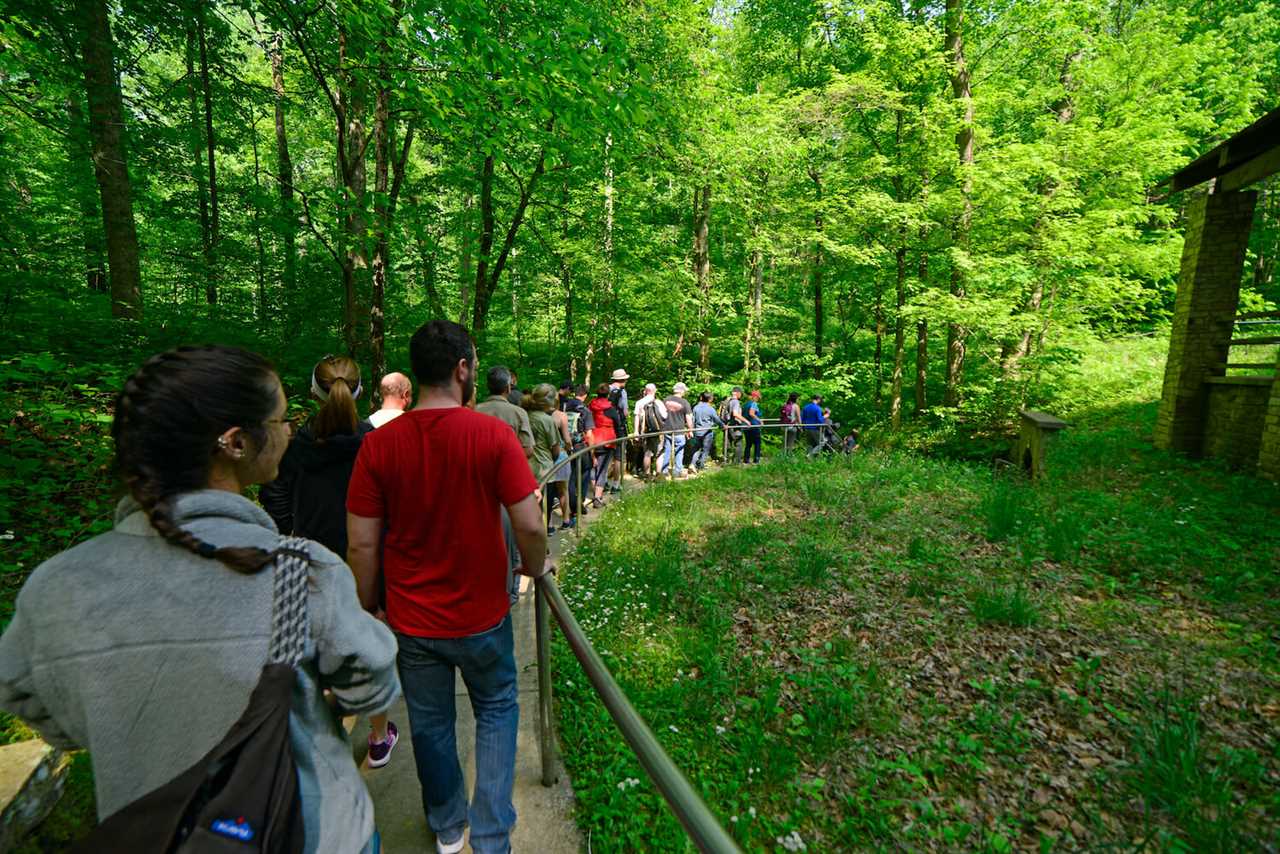
Photo by Patrick baehl de Lescure via Shutterstock
- There are various food options in the park or in nearby towns. In the park, Green River Grill offers fine dining, while Spelunkers Café and Ice Cream Parlor provide counter-service dining and take-out options.
- No fuel is available in the park, but there are gas stations nearby in Cave City and Park City. Bring a portable gas can to be extra prepared.
- There are coin-operated, self-service washing machines and dryers (two of each) in the Caver’s Camp Store, which sells laundry detergent and offers change for paper currency.
- A headlamp is key for exploring all the cave elements while keeping your hands free for scrambles, climbs, or to steady yourself.
- The cave is a constant 54 degrees. Be sure to bring a fleece or light coat with you.
- Bring a soft-sided backpack to store your gear but note that metal framed backpacks and those that are so large that they extend higher than the shoulder or below the hips are not allowed.
- Sturdy hiking shoes with closed toes and good tread are a must.
- Consider a screened-in instant shelter or awning screen room if visiting during the summer months to give yourself a less buggy outdoor lounge area.
As is true of any adventure, it’s always good to bring your curiosity and good questions for the rangers.
Brief History of Mammoth Cave National Park

Photo by Zack Frank via Shutterstock
Local peoples started exploring the cave some 4,000 to 5,000 years ago. In fact, mummified remains have been found dating back thousands of years, and the park works closely with local tribal partners so that these deceased persons have safe resting places well away from cave tours.
Legends say that the first Europeans arrived in 1797 when a hunter pursued a wounded bear to the mouth of the cave. The first use of ‘Mammoth Cave’ in print came in 1810, while formal tours, operated by private concerns, started in 1816.
Parts of the cave changed ownership several times, being sold back and forth to and from various developers who were first interested in mining minerals from the cave but eventually built the infrastructure for tourism. It was not until July 1st, 1941, that the cave was established as a national park.
It’s worth noting that an enslaved guide, Mat Bransford worked in the caves in the 1830s. He is the great-grandfather of Jerry Bransford, a Black ranger and fifth-generation guide that now works in the park as a seasonal guide.
Plan your next trip to the national parks in an RV. Rent an RV, trade-In your RV, or buy a new or used RV and start traveling for less than $5 a day.
Have you visited Mammoth Cave National Park? Share your experience in the comments below!
By: Chez Chesak
Title: Camping World’s Guide to RVing Mammoth Cave National Park
Sourced From: blog.campingworld.com/the-rv-life/where-to-go/camping-worlds-guide-to-rving-mammoth-cave-national-park/
Published Date: Thu, 13 Oct 2022 14:00:39 +0000
---------------------------------------------
 CampingSurvivalistHuntingFishingExploringHikingPrivacy PolicyTerms And Conditions
CampingSurvivalistHuntingFishingExploringHikingPrivacy PolicyTerms And Conditions
